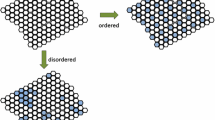Summary
Both, irreversibility and evolution, imply order in time. It is argued that the only possible concept of time is a ‘system-specific time’, and that order in time is convertible into order in space and vice-versa. While life-less, complex systems are irreversible because of their complexity and, hence, not repeatable, living systems are reproduced by irreversible copy-reproduction and by coding. This mode of reproduction results of necessity in an arrow of time of growth and increasing complexity with death as its antagonist, and in obligatory spatial asymmetry. This arrow of increasing organic complexity is simultaneous with, and independent of, the arrow of increasing entropy. — A generalized, organic hierarchy is proposed as the model to study higher evolution. This hierarchy reproduces itself by differential rates of reproduction of its subnunits within and between the various hierarchical levels of organization. Phylogenetic change is brought about by a change in this hierarchy's specific phase pattern of growth. Continuous and discrete organization is defined, and it is shown that specific relations between continuous and discrete levels within the hierarchy result in accumulation of neutral alleles. This accumulation is due to complex-irreversibility and causes genetic stabilisation, i.e. heritability, of the speciesspecific morphology of organisms.
Similar content being viewed by others
References
Walker, I., Biological memory. Acta biotheor.21 (1972) 203–235.
From a discussion with G. Wuerth, Jr, Zürich. G. Wuerth works on experience of time and space in cinematography and television.
Weyl, H., Symmetry, Princeton University Press, Princeton 1952.
Wigner, E.P., Violation of symmetry in physics. Scient. Am.213 (1965) 28–36.
Walker, I., Maxwell's demon in biological systems. Acta biotheor.25 (1976) 103–110.
Eigen, M., Self-organization of matter and the evolution of macromolecules. Naturwissenschaften58 (1971) 465–523.
Eigen, M., and Schuster, P., The hypercycle. A principle of natural self-organization. Springer, Berlin/Heidelberg/New York 1979.
Grimm, Gebrüder, Von dem Fischer und syner Fru, in: Kinder- und Hausmärchen. Manesse Verlag. Zürich (new edn).
Schroedinger, E., Was ist Leben? Franke, Bern 1951.
Walker, I., The pattern of expressivity with special reference to symmetry in a scutellar bristle mutant of a East-AfricanZaprionus species. Revue suisse Zool.79 (1972) 165–178.
Portmann, A., Die Tiergestalt. Friedrich Reinhardt, Basel 1960.
Thompson d'Arcy, W., On growth and form. Cambridge University Press. Cambridge/London 1942.
Walker, I., The mechanical porperties of proteins determine the laws of evolutionary change, Acta biotheor.28 (1979) 239–282.
Kühn, A., Pohley, H.J., and Henke, K., in: Vorlesungen über Entwicklungsphysiologie. Ed. A. Kühn. Springer. Berlin/Göttingen/Heidelberg 1955.
Goodman, M., and Moore, G.W., use of Chou-Fasman amino-acid conformational parameters to analyze the organization of the genetic code and to construct protein genealogies. J. molec. Evol.10 (1977) 7–47.
Miyata, T., Myazawa, S., and Yasunaga, T., Two types of amino-acid substitutions in protein evolution. J. molec. Evol.12 (1979) 219–236.
Evans, H.J., ed., Genetic repair. Genetics79 (suppl., 1975.
Walker, I., The evolution of sexual reproduction as a repair mechanism. Part 1. A model for self-repair and its biological implications. Acta biotheor.27 (1978) 133–158.
Williams, R.M., and Walker, I., The evolution of sexual reproduction as a repair mechanism. Part 2. Mathematical treatment of the wheel model and its significance for real systems. Acta biotheor.27 (1978) 159–184.
Bernstein, H., Byers, G.S., and Michod, R.E., Evolution of sexual reproduction: Importance of DNA repair, complementation and variation. Am. Nat.117 (1981) 537–549.
Walker, I., The problem of somatic plasticity in the theory of evolution. Arch. Julius Klaus-Stift. Vererb-Forsch.43 (1968) 40–51
Walker, I., and Williams, R.M., The evolution of the cooperative group. Acta biotheor.25 (1976) 1–43.
Author information
Authors and Affiliations
Additional information
Acknowledgment. I thank Dr P. Henderson for much stimulating discussion and for critically reading the manuscript.
Rights and permissions
About this article
Cite this article
Walker, I. Complex-irreversibility and evolution. Experientia 39, 806–813 (1983). https://doi.org/10.1007/BF01990396
Published:
Issue Date:
DOI: https://doi.org/10.1007/BF01990396




